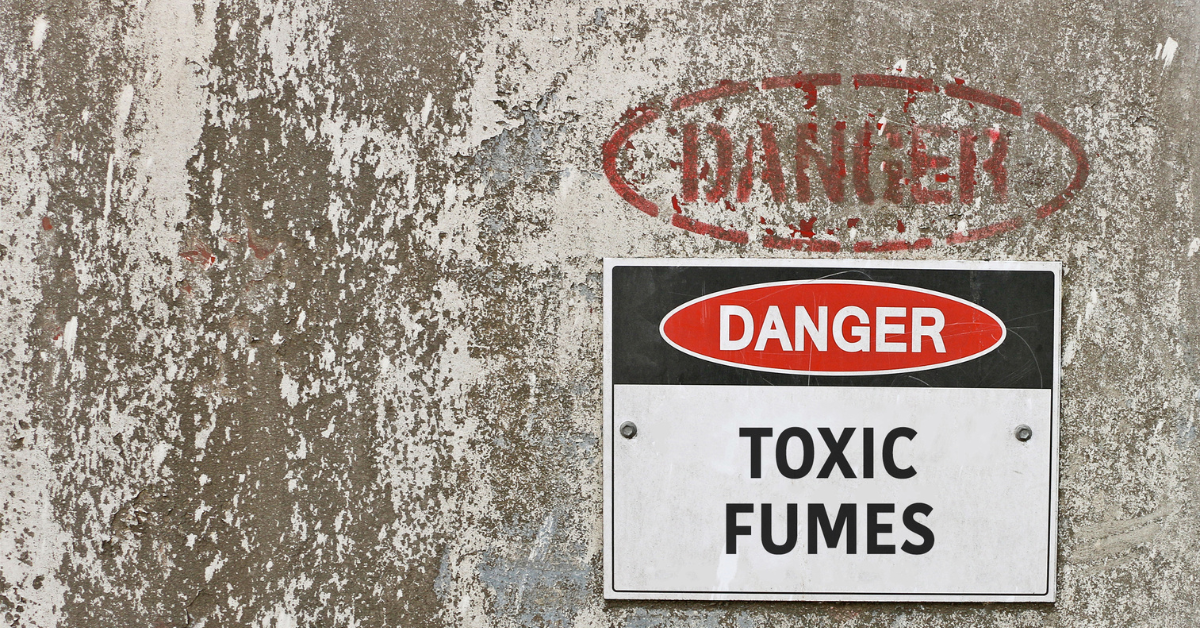You work hard to keep your employees safe. But did you know that chemicals in the workplace can pose a severe threat to their health?
According to the U.S. Department of Labor Occupational Safety and Health Administration, over 190,000 illnesses and more than 50,000 deaths occur yearly from exposure to hazardous chemicals.
Although it is not mandatory under any regulatory statute that you conduct chemical exposure monitoring, it is thought to be a best practice in today's workplace, especially with the difficulty in hiring and keeping good employees.
OSHA and Chemical Safety Standards
OSHA has a variety of standards specific to different industries. For example, the 1910 Standards are their General Industry Standards. Their 1926 Standards are the Construction Standards. The 1915, 1917, 1918, and 1919 are their Maritime Standards. Agricultural Standards are 1928 and Recordkeeping Standards are 1904.
OSHA regulates exposure to about 500 chemicals. Among their regulations are a handful of specific chemicals (about 34) for which OSHA has a chemical-specific standard. Some of these, specifically one of the more recent ones for Silica, have a specific component that calls for the development of an “Exposure Control Plan,” which is directed specifically to the concept of minimizing exposure to the chemical in that standard.
OSHA requires baseline exposure monitoring for several chemicals, like lead. The requirement is to conduct personal exposure monitoring of workers who work with lead to determine if they are exposed at or above harmful limits.
Based on the results of the baseline monitoring, certain programs may need to be put in place for respiratory protection, other Personal Protective Equipment (PPE), ventilation, and more. Although OSHA’s chemical-specific standards call for this baseline testing, some 475 other chemicals do not require the same—and perhaps they should.
The whole concept of baseline exposure monitoring of any chemical in use is pretty simple. It is to determine whether a hazard exists and if one does, what needs to be done to control or eliminate it?
Common Chemicals in the Workplace
Almost every workplace uses chemicals in one form or another in the performance of their work. Whether it be manufacturing, construction, health care, hospitality, or education, chemicals are in use every day.
Although chemical use has been reduced drastically in the last several decades, workers are more concerned than ever about the chemicals they work with and if they are being harmed by working with them.

What is a Chemical Exposure Control Plan?
A chemical exposure control plan is a written document that outlines the policies, procedures, and controls that will be used to determine if employees are exposed to harmful levels of chemicals.
The details of this plan are based on monitoring workplace exposure to chemicals and—based on the results of that monitoring—identifying which procedures must be put in place to minimize any hazards that may exist from working with those chemicals. This could include everything from the use of PPE, respiratory protection, installation of exhaust ventilation, changing the process, and, in extreme situations, discontinuing the use of the chemical.
Before you can develop an exposure control plan, you need to determine if there are any hazards to control.
Your greatest asset in this process is a competent Industrial Hygienist (IH).
How Industrial Hygienists Help Draft and Implement Chemical Exposure Control Plans
An Industrial Hygienist practices a science (or art) that is devoted to the anticipation, recognition, evaluation, and control of environmental factors/stressors in the workplace that may cause sickness, impaired health, well-being, or significant discomfort.
Here’s a breakdown of the Industrial Hygiene methodology:
Anticipation
You first have to think that there may be chemicals or other hazards involved in the process or operation. For example, if there are solvents in use for a process, one needs to recognize that as a “potential” source of exposure.
Recognition
If the thought is that there are solvents in use, and knowledge or research into the product determines that they are hazardous.
Keep in mind that even if a product is not regulated by OSHA, NIOSH, or some other agency, a Safety Data Sheet or some other sources of information may suggest that the product can be hazardous, in which case it’s always worth looking into.
Evaluation
Determine and apply the methods or tests that would determine whether a hazard exists. Although a hazardous material may be in use and workers are involved in its use or are present where it is used, it does not necessarily mean that they are exposed to hazardous levels of that chemical.
Control
Based on the level of exposure measured, the application of appropriate controls can be made. In some cases, monitoring may show no exposure and therefore no hazard and no controls will be needed.
In other cases, monitoring may show a significant exposure that needs to be controlled by any of several methods ranging from PPE, Respirators, enclosure of the process, exhaust ventilation, or replacement of the offending chemical with a much safer and less hazardous material.
How to Create a Chemical Exposure Control Plan
A chemical exposure control plan is a written document that outlines the procedures and controls that will be put in place to protect employees from exposure to hazardous chemicals. The plan should include the following elements:
Identification of Hazardous Chemicals:
The first step is to identify all the hazardous chemicals that workers may be exposed to in the workplace. This includes chemicals used in the workplace and chemicals produced as a result of work processes. A product that is a chemical is not always readily recognizable as a chemical.
For example, as welding rods are consumed by the welding process the smoke you see is really made up of a variety of things including metals that can create a serious exposure to chemicals. Welding or cutting stainless steel can be particularly hazardous.
Identifying the hazardous materials that can be present in a work process is not always easy and experts should be used to help identify what hazardous materials may be present in your workplace.
Evaluation of Exposure Risks:
Once all the hazardous chemicals have been identified, the next step is to evaluate the potential risks of workers being exposed.
Chemicals may enter the body through skin contact, inhalation, and ingestion. In the case of most chemicals, inhalation is the most common way chemicals can get into your body.
Therefore, the typical way to assess if a worker is exposed to a hazardous chemical, and exposed at a hazardous level, is to perform an Industrial Hygiene Exposure Monitoring Survey.
Industrial Hygiene Exposure Monitoring Surveys are generally accomplished by the worker in question wearing a sampling or monitoring device.
This device is usually a battery-powered pump that is worn on the belt of the worker, with the collection device (a filter, sorbent tube, or other) attached to the color of the worker whose exposure we are trying to determine.
The pump draws air through that collection device generally for the length of the total work shift. That sample is then sent to a laboratory where it is analyzed and the results are reported back to the Industrial Hygienist who performed the survey.
Selection and Implementation of Controls:
After the risks of exposure have been evaluated, the next step is to select controls that will minimize or eliminate the risks. Controls can include engineering controls, work practice controls, personal protective equipment, modification of the process, or even the substitution of a less harmful material.
Worker Training:
Employees should be trained on the dangers of exposure to hazardous chemicals and the proper procedures for handling and storing these chemicals. This step is vital and should not be overlooked. For OSHA’s chemical-specific standards, the requirements for training and documentation of that training are quite clear.
Medical Surveillance:
Certain hazardous chemicals may require medical surveillance. This may include regular medical exams, blood tests, and more. As with training, OSHA’s chemical-specific standards are very specific about Medical Surveillance.
Personal Protective Equipment (PPE):
The world of Industrial Hygiene suggests the use of PPE is the last resort control recommendation largely because PPE is only effective if it is worn and worn properly and its use is often difficult to oversee.
In the real world, PPE is provided all the time as the first line of defense since it is the easiest, and usually the least expensive, solution. If harmful exposures are measured, we always recommend that they be mitigated through the use of less harmful chemicals first (although this is hardly ever done for a host of reasons) and look at every alternative BEFORE PPE is chosen.

Engineering Controls:
Engineering controls are usually used to minimize exposures or eliminate them. They involve enclosing machines and equipment, removing the worker from direct exposure by redesigning the process, providing barriers between the process and the exposed worker, or installing proper exhaust ventilation.
It is very difficult to use ventilation as a control technique. Designing a properly functioning ventilation system is more complicated than it should be. As a result, many companies that are asked to install exhaust ventilation systems lack the necessary experience to do so.
If a decision is made to incorporate exhaust ventilation in the control of exposure to chemicals, endeavor to utilize a reputable exhaust ventilation company as they are few and far between.
Administrative Controls:
Utilizing administrative controls rarely works well. These controls are usually based around rotating employees through jobs with exposure so they spend less time being exposed which means that more workers share the exposure.
Although the math works when using this approach, sharing exposures is never a good idea. In almost 50 years in the health and safety field, our experts have only seen a few situations where we thought Administrative Controls could work.
In almost all of those cases, the volume of production was occurring at such a high volume that there were only 10 or so hours a week of production required and it could have been spread out over the entire week instead of trying to do it all in one or two days.
As long as the required production never changed, it could work but as soon as there was a need for more production of this product—or if business, in general, is increased—they would be right back in the same situation where someone was overexposed.
Monitoring and Record-Keeping:
Employers should monitor employee exposure to hazardous chemicals and keep accurate records, which helps ensure that the controls are adequate and that employees are not being exposed to dangerous levels of chemicals.
This approach works particularly well when a proper baseline exposure survey has been conducted and follow-up surveys then can be used to compare against the baseline to assure that nothing has changed.
In a lot of cases, companies conduct a baseline that proves acceptable exposures and then assume that is all they need. They may never monitor the environment again, even with increases in production, installation of new and/or additional equipment, or a change in chemicals used or the vendors providing the chemicals.
We have seen many occasions when the new and improved chemical may be new and improved for the process but it is not for the workers exposed to it.
Create a Chemical Exposure Control Plan for Your Workplace
The above steps should be followed when creating a chemical exposure control plan. Following these steps can effectively protect your employees from exposure to hazardous chemicals.
Implementing a chemical exposure control plan is the best way to protect your employees from the dangers of hazardous chemicals. Following the procedures outlined in this guide ensures that your employees are safe and healthy.







